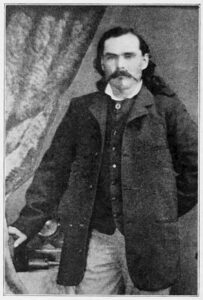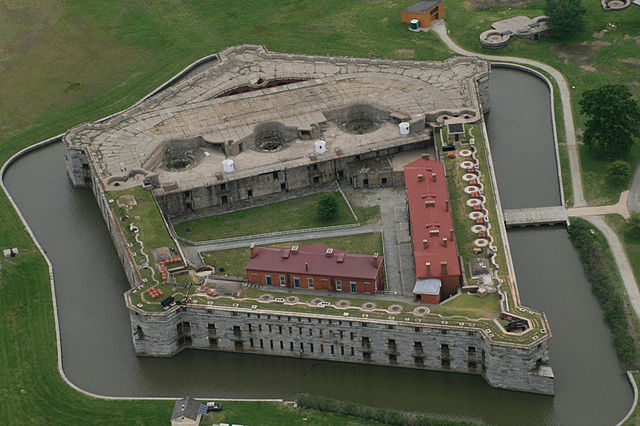
An Introduction
Tucked away on the secluded Pea Patch Island, amidst the flowing waters of the Delaware River, lies the enigmatic Fort Delaware. This historical fort quietly observes from its vantage point, holding within its walls the echoes of a turbulent era in American history. Famous for its pivotal role in the Civil War, this bastion evolved from a strategic military stronghold into a formidable prisoner-of-war camp steeped in tales of bravery and hardship. Today exists a hidden narrative and a rich historical tapestry at Fort Delaware, a place that once imprisoned thousands of Confederate soldiers, each with a story to tell.
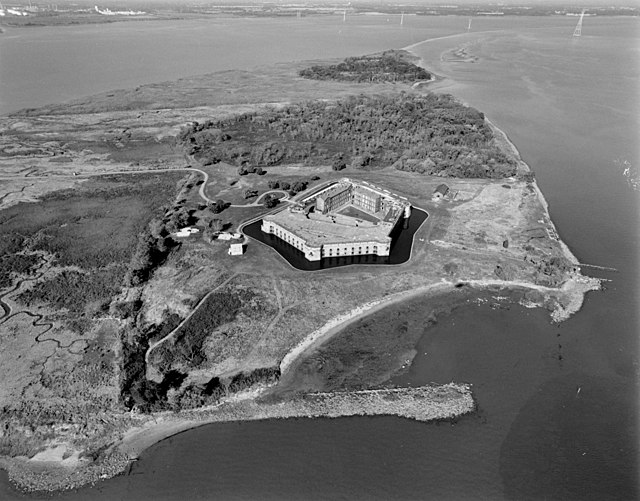
Fort Delaware – A Brief Historical Background
The story of Fort Delaware begins in the early 19th century. Following the War of 1812, the United States recognized the need for a strong coastal defense system. The fort’s location on Pea Patch Island was strategically chosen to protect the ports of Wilmington and Philadelphia from naval attacks. This decision marked the first step in the fort’s long and varied history.
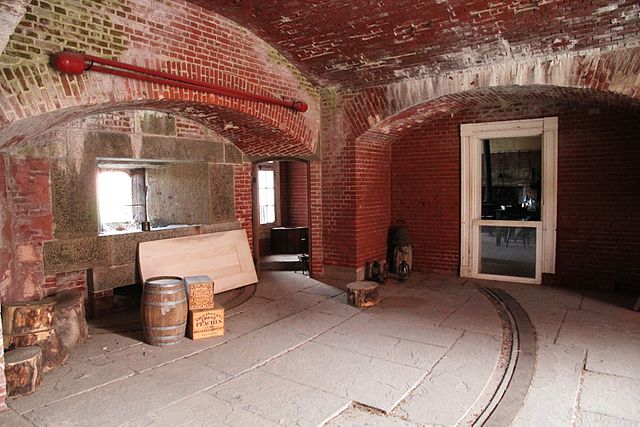
The original construction of Fort Delaware began in 1817 but was soon halted due to structural issues. It wasn’t until 1848 that a more robust and enduring design was implemented. As the Civil War erupted, its purpose shifted dramatically, placing it at the center of a darker narrative in American military history.
The Transformation into a POW Camp
By 1862, as the number of Confederate captives increased, the Union Army needed more space to house prisoners. The decision to convert Fort Delaware into a POW camp was both strategic and practical, given its isolated location and existing military infrastructure. The transformation of Fort Delaware involved significant changes. Barracks were constructed to accommodate the arrival of prisoners. The fort’s open spaces were quickly filled with wooden barracks, and security measures were heightened to prevent escapes. This conversion was completed quickly, reflecting the urgent need to house prisoners.
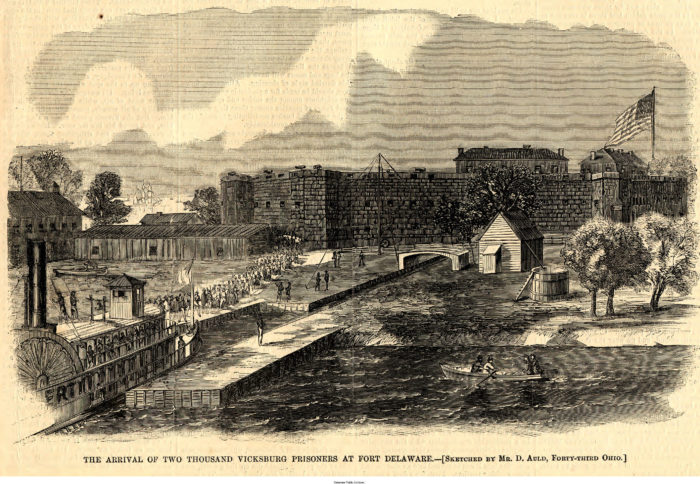
At its peak, the fort held nearly 33,000 prisoners, far exceeding its intended capacity. The camp’s infrastructure, initially built for a small garrison, struggled to accommodate the influx of detainees, leading to overcrowded and harsh living conditions.
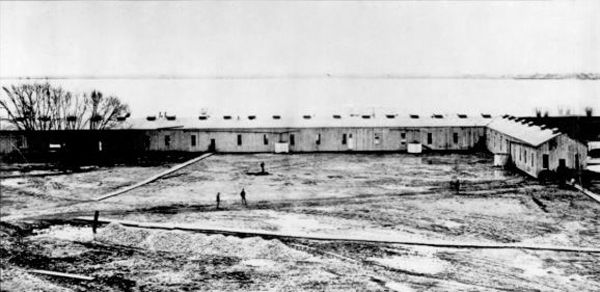
The Prisoner’s Life Inside Fort Delaware
Living conditions within Fort Delaware were harsh and overcrowded. The fort, designed to house a much smaller number of soldiers, struggled to accommodate the thousands of prisoners. Barracks were cramped, sanitation was poor, and disease spread quickly. The struggle for adequate space and cleanliness was a constant battle for the inmates. The overcrowding, scarce rations, and minimal medical facilities led to a high rate of disease and mortality. Personal accounts from prisoners reveal a daily struggle for survival amidst deplorable conditions.
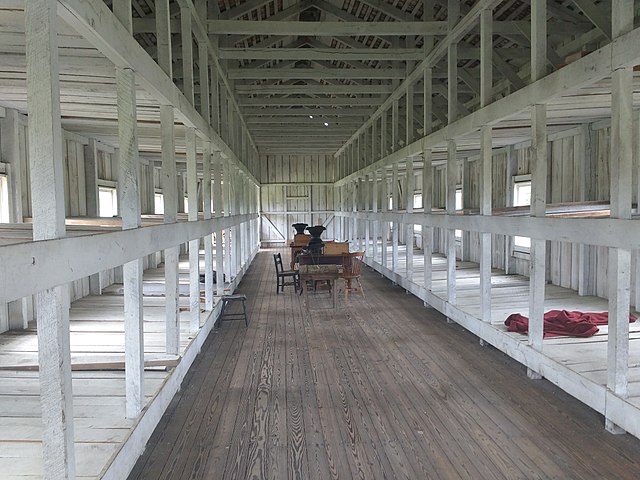

The daily life of a prisoner at Fort Delaware included roll calls, meager meals, and limited recreational activities. However, amidst this hardship were stories of resilience, solidarity, and the unyielding human spirit, and despite the grim conditions, prisoners found ways to cope. Some engaged in crafting small items, reading, or writing letters home. The companionship among prisoners created a crucial support system, helping many endure the mental and physical adversities of imprisonment.
The Administration of the Camp
The administration of Fort Delaware was a complex operation. The camp was under the jurisdiction of the Union Army, and its command structure included a commanding officer, typically a high-ranking military official, supported by a team of officers and guards. This team was responsible for every aspect of camp life, from security to prisoner welfare.

The administration of Fort Delaware was under constant pressure to maintain security and order. Escape attempts were not uncommon, leading to strict security measures. Guards were stationed throughout the camp, and roll calls were frequent. Despite these measures, there were several recorded escape attempts, some successful, reflecting the prisoners’ desperation and ingenuity.

The treatment of prisoners was a subject of contemporary controversy, with some accounts indicating harsh treatment by the guards, while others suggest a level of basic decency was maintained.
The End of the War and the Camp’s Closure
As the Civil War drew close, a significant episode also closed for Fort Delaware. The fort transitioned from a holding facility to a processing center for the release of Confederate prisoners. The actual process of releasing prisoners from Fort Delaware was a daunting undertaking. Following the official surrender of Confederate forces in April 1865, the camp began allowing prisoners to leave in waves. Each release was a moment of mixed emotions – relief for the freedom regained, sorrow for the lost comrades, and apprehension about returning to a changed South.
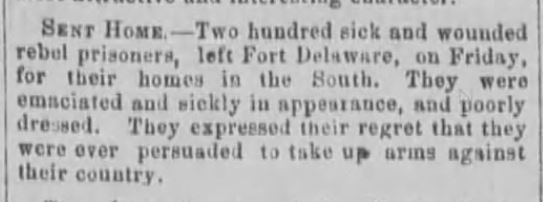
The camp’s closure marked the end of a dark chapter in its history. In the years following, the fort saw various uses, but none as infamous as its role during the Civil War.
The journey home was not an easy one for many former prisoners. They had to navigate a war-scarred countryside, often with inadequate resources and in poor health. The challenges of this journey were worsened by the uncertainty of what awaited them at home – a region devastated by war, economically crippled, and socially transformed.
Conclusion
Today, Fort Delaware serves as a poignant historical site. Efforts to preserve the fort and its history include tours, reenactments, and educational programs. These initiatives educate the public about this chapter in American history and honor the memory of those who lived and perished within its walls.

In the tapestry of American history, Fort Delaware stands as a poignant thread, weaving a narrative of transformation from a bastion of military might to a somber Civil War POW camp. This storied fortress echoes tales of a time when brother fought brother, and the nation’s soul was tested. Within these walls, the air was thick with stories of endurance, hope, and despair, painting a vivid picture of the human condition under the shadow of war.
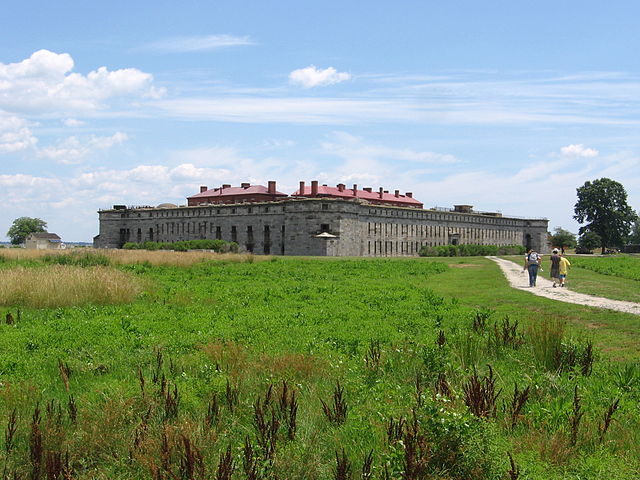
Visiting Fort Delaware is not just a walk through a historic site; it’s a journey back in time. It’s an opportunity to tread softly through the memories of those who once called it home under dire circumstances. It’s a chance to understand, to feel the weight of history, and to appreciate the depth of our past. In the quiet moments spent wandering through its ramparts, we are reminded that these stories, etched in the very fabric of the fort, are the threads that connect us to the tapestry of our shared history. They are lessons and legacies that resonate through time, urging us not to forget the human cost of conflict and the resilience of the human spirit.
For more information, see
Fort Delaware, Delaware City, Delaware – Legends of America
FDS Website Home Page (fortdelaware.org)
This Delaware Prison Is Among The Most Haunted Places In The Nation (onlyinyourstate.com)
Fort Delaware – Delaware State Parks (destateparks.com)
Presbyterians and the Civil War Page 1 | Presbyterian Historical Society (pcusa.org)
